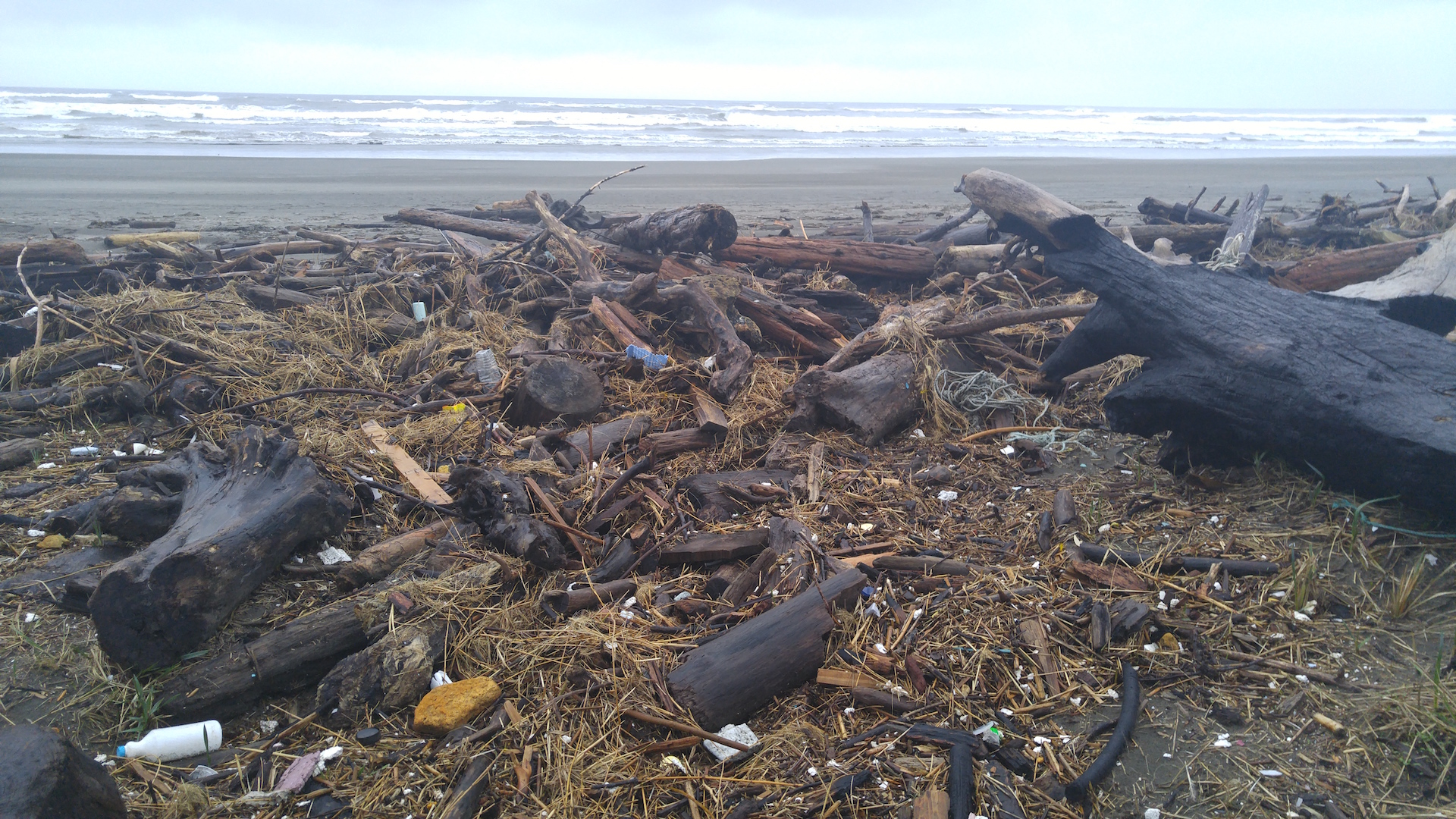
If you've been to a beach cleanup, you're probably familiar with some of the common items we see, the majority of which are single-use plastics, such forks and spoons or bottles and caps. And foam. So much foam. From cups, plates, and clamshells to tiny foam fragments littering the wrack line, 'styrofoam' is everywhere.
In fact, foam fragments have made it to Surfrider Foundation's Top Five items we clean off our beaches literally every year since we started counting, and this year is no different. As of March 2021, foam fragments are currently #3 on the list, vying with plastic pieces and cigarette butts for that #1 spot.
CLICK HERE to take Action to Support a Styrofoam ban in Washington State! You can also call the Legislative Hotline (1-800-562-6000) and tell your representatives to support SB5022!
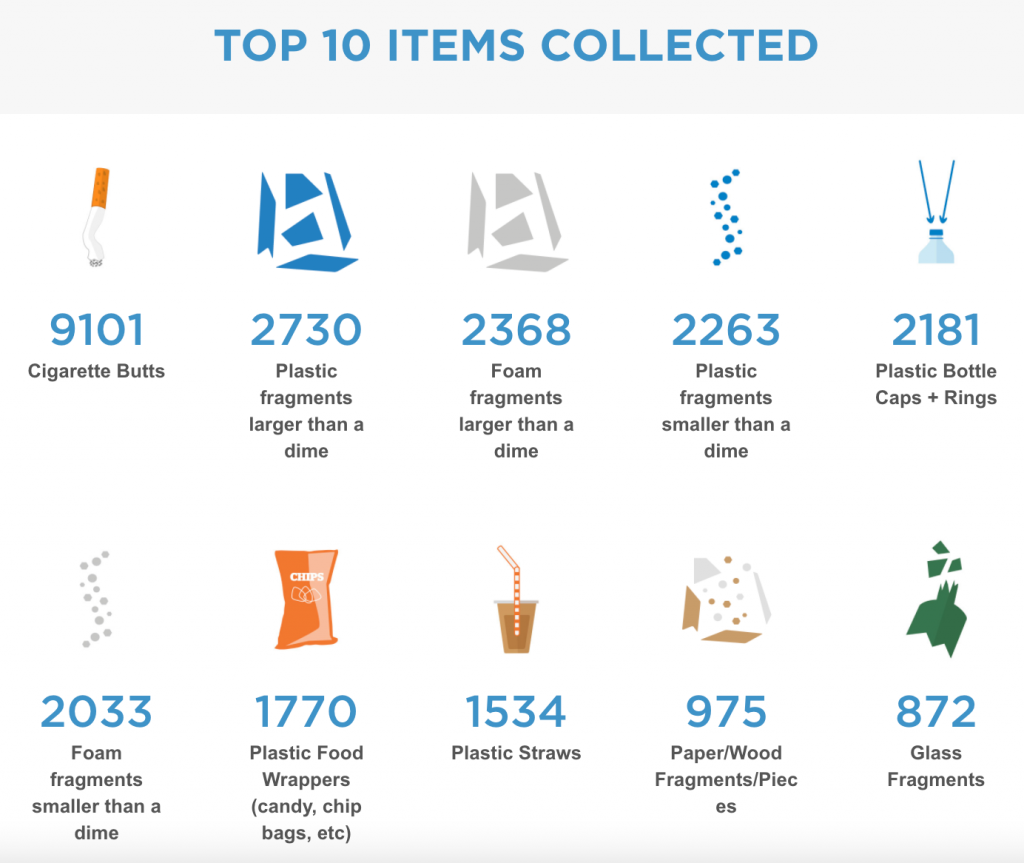
What is styrofoam?
The word Styrofoam™ is a trademarked name for a specific Dow Chemical Company foam product (it's actually blue). The generic white foam we commonly refer to as styrofoam (such as packing peanuts and coolers) is more accurately called expanded polystyrene, or EPS.
EPS starts life out as benzene, a fossil fuel derivative and known carcinogen. That benzene is then converted into styrene, which in its pure form is a clear, flammable, sweet smelling liquid. Through a chemical process called polymerization, we string a bunch of styrene molecules together into polystyrene, which is a hard plastic (found in tons of common items, like plastic utensils and yogurt cups - anything with a #6 on it). Finally we expand it into foam with a blowing agent (usually pentane, a volatile organic compound or VOC - aka toxic air pollutant).
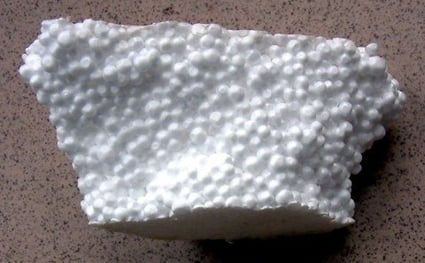
Image credit: Wikimedia commons
EPS foam is incredibly stable, meaning it won't break down naturally. Some estimate it takes 500 years to degrade, but the truth is we don't really know - it could take thousands of years for it to truly biodegrade (versus photodegrading into smaller and smaller pieces).
Nationally, the US produces roughly 30 million tons of polystyrene each year, including 28 billion foam cups. The vast majority of that (~80%) ends up in a landfill, where it will sit for centuries (maybe forever). The rest of it finds its way into our waters, where it wreaks havoc on marine life.
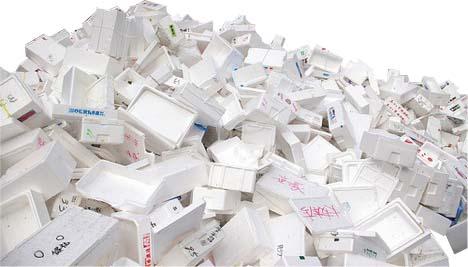
Why we need to Forget the Foam
Just like other plastics, the very properties that make EPS so useful also make it so problematic. When viewed from a packaging perspective, it's a fantastic product - lightweight and durable with great insulating properties. But these same qualities make it an environmental nightmare.
Like many plastics, EPS can act as a sponge for other toxic chemicals in the environment. One study found that "mercury present in the environment becomes associated with styrofoam debris." Another study found that mussels growing on EPS debris had higher levels of toxic additives than mussels growing on other materials. Since it easily breaks into small foam fragments, it's frequently eaten by marine life, often leading to death either due to impaction or toxicity. And since we know that those foam fragments can contain toxic additives and mercury, it's entirely possible that these chemicals can end up in our seafood and on our plates.
It's bad for us humans, too
Although EPS has been declared safe for food use by the FDA, it is also known to contain remnants of the chemicals used to make it, such as styrene and benzene. These remnants can leach out of the foam packaging and into our food, especially if that food is fatty, acidic, or hot (which is extra unfortunate, since EPS is often used for hot foods because it's such a great insulator). Multiple studies conducted in the 1980's found styrene in 100% of the human fat tissues they sampled. And that was decades ago - EPS production and use has only increased since then.
Styrene was listed as a probable carcinogen in 2011 by the National Toxicology Program, a conclusion later confirmed by the National Academy of Sciences and again by the World Health Organization in 2018 (styrene is naturally found in low levels in some plants, such as cinnamon, coffee, and tobacco). Those at greatest risk are the people working in facilities that manufacture or process EPS who are exposed to much higher levels of toxic derivatives, increasing their risk of cancers, neurotoxic symptoms, and heart disease.
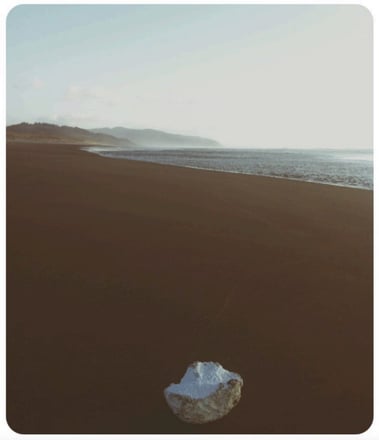
What can we do?
As it stands, we don't have any great end-of-life options for the all the EPS we make. It's filling up our landfills and polluting our waterways. Burning it releases toxic chemicals that can cause cancer or birth defects. While it can be recycled, it's not economical, and most recycling facilities don't want it. It contaminates the waste stream and drives up the cost of recycling in general.
And remember, the majority of these items are used once for a few minutes then thrown away. The legacy of our convenience culture will last for centuries. The most important thing we can do to address this issue is turn off the tap.
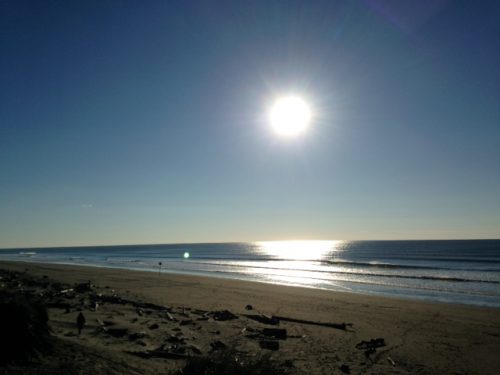
Ultimately, our society needs to move away from wasteful systems full of single use products, especially those made of fossil fuels. The good news is that we are seeing change happen across the country and around the world - from local ordinances like San Juan County's ban on EPS take-out containers, to more sweeping legislation like the proposed federal Break Free From Plastic Pollution Act.
Here in Washington, we continue to work on our Foam Free Washington campaign. This year, we have a team of amazing partners working to pass SB 5022, which, if we're successful, would be the strongest styrofoam ban in the nation. Head to our 2021 Legislative Updates page to learn more about this bill and how you can help support it!
On an individual level, we can all do our part by refusing to buy these products. One option is to get your takeout from an Ocean Friendly Restaurant that won't serve your food in plastic foam. Another option is to bring your own reusable containers - our partners at Zero Waste Washington have been working to upgrade our BYO container laws. Or use a different product - there are increasing numbers of safer, more eco-friendly alternatives to EPS.
Ultimately, expanded polystyrene is far from cheap - the continued use of it damages our environment and our health and contributes to climate change. One 2016 study estimated the hidden costs of EPS are $7 billion a year. A recent poll of several states showed bipartisan support of styrofoam bans, with 60% supporting a ban on EPS and 76% in favor of legislation to reduce plastic pollution.
Given everything we know about EPS, it's long past time we forget the foam.

For more information:
- Surfrider's Beachapedia.org page on polystyrene
- The Green Dining Alliance page on the real cost of styrofoam
- CA Clean Water Action factsheet on the Health Effects of Styrene
